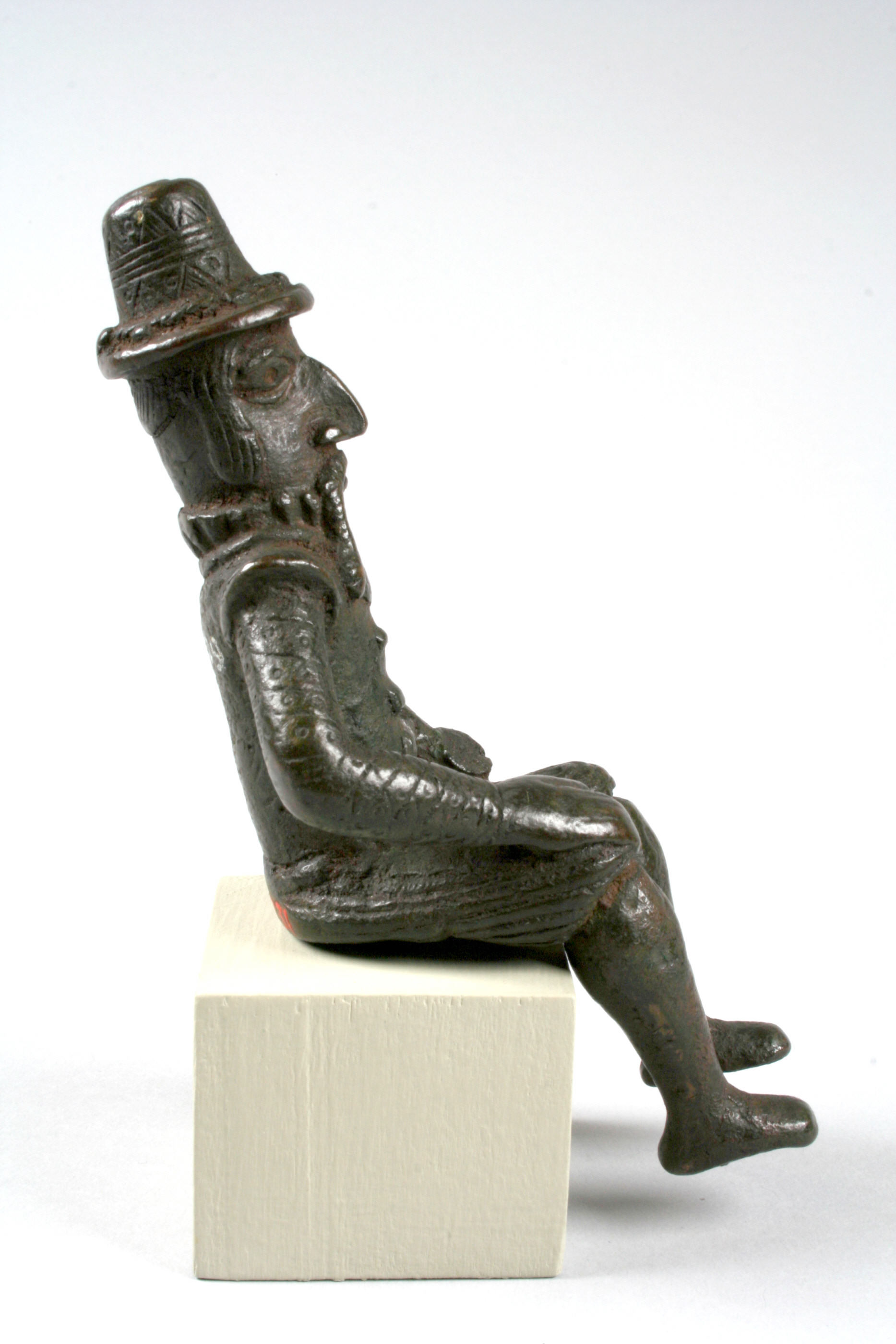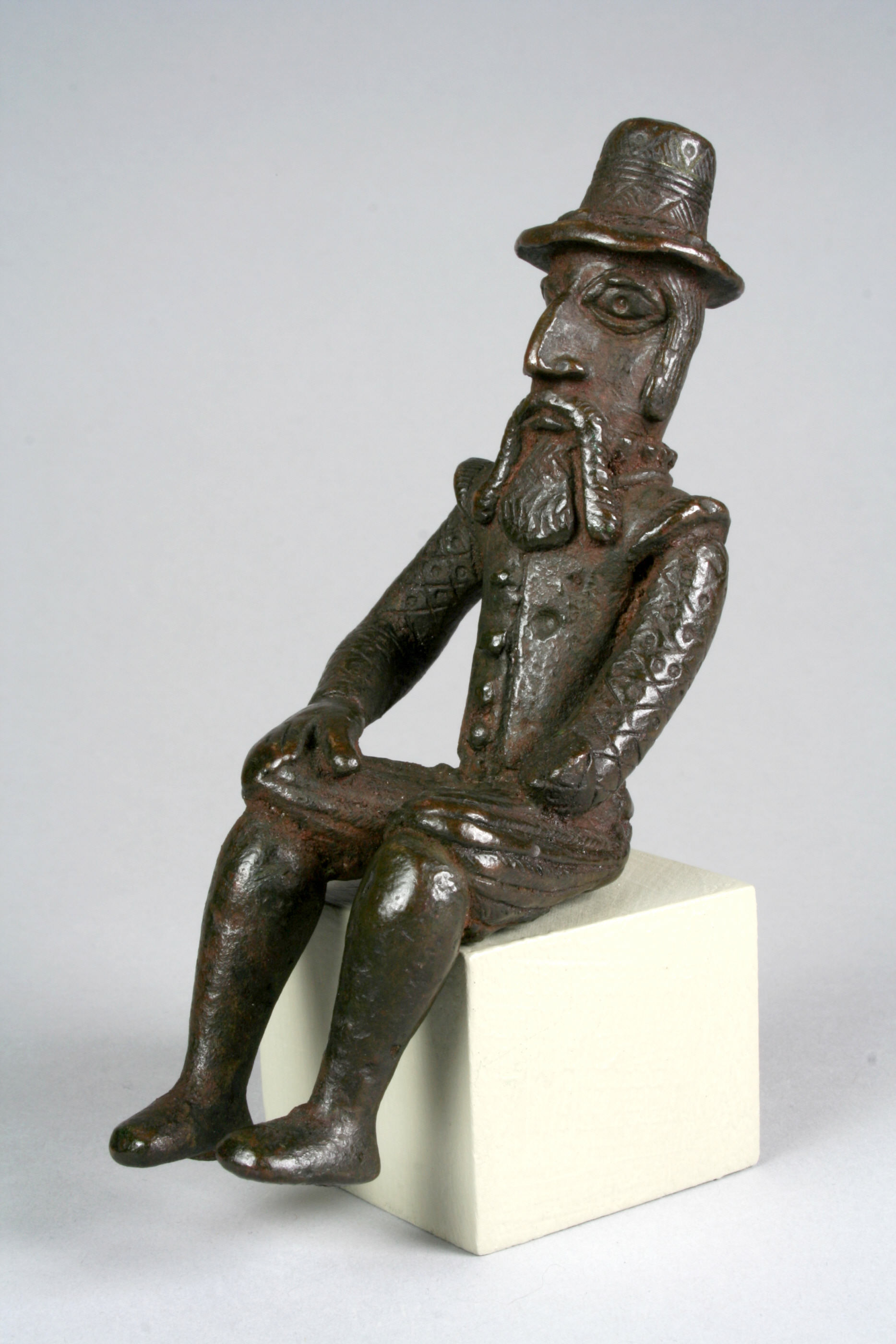Figure: Seated Portuguese Male
Not on view
Merchants and explorers from Portugal first made contact with the kingdom of Benin in 1486, initiating an economic relationship that ultimately had a profound impact upon the art and politics of this West African state. Benin's oral histories relate how Oba Esigie, who ruled Benin in the early sixteenth century, skillfully utilized these new trading partners to augment and consolidate his personal power and expand his kingdom's military and economic strength within the Guinea Coast region of Africa. From this period onward, images of Portuguese traders were widely incorporated into royal Benin art forms.
This tiny figure of a seated Portuguese man is a type of cast brass sculpture displayed on royal ancestral altars within the palace compound. Given its small size, it may have originally been a component of a larger work, now lost, such as an altar tableau (aseberia) or a brass altar to the hand (ikegobo). Although the Portuguese were physically different and initially quite unfamiliar to Benin's artists, sculptural depictions such as this one are very much in keeping with the aesthetic criteria and conventions of Benin courtly arts. In this sculptural tradition, identity and social status were indicated through clothing and other personal accoutrements rather than by facial features, which were typically generalized and slightly abstracted. Like most Benin artists, the creator of this seated figure exaggerated those generic aspects of the European face he found distinctive and representative, such as the large, beaklike nose, long hair, and luxurious moustache and beard. However, most of his interest appears to have been directed toward his subject's costume: its naturalism exhibits a keen attention to detail. The high-crowned hat, buttoned doublet with flared shoulders, patterned sleeves, ruffled collar, breeches, and boots are all faithfully rendered. Compared to other Portuguese subjects depicted in cast brass sculptures from Benin, this man's clothing appears to be especially fine and elaborate, suggesting an individual of significant wealth and importance.
This image cannot be enlarged, viewed at full screen, or downloaded.
This artwork is meant to be viewed from right to left. Scroll left to view more.





